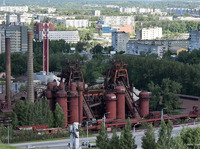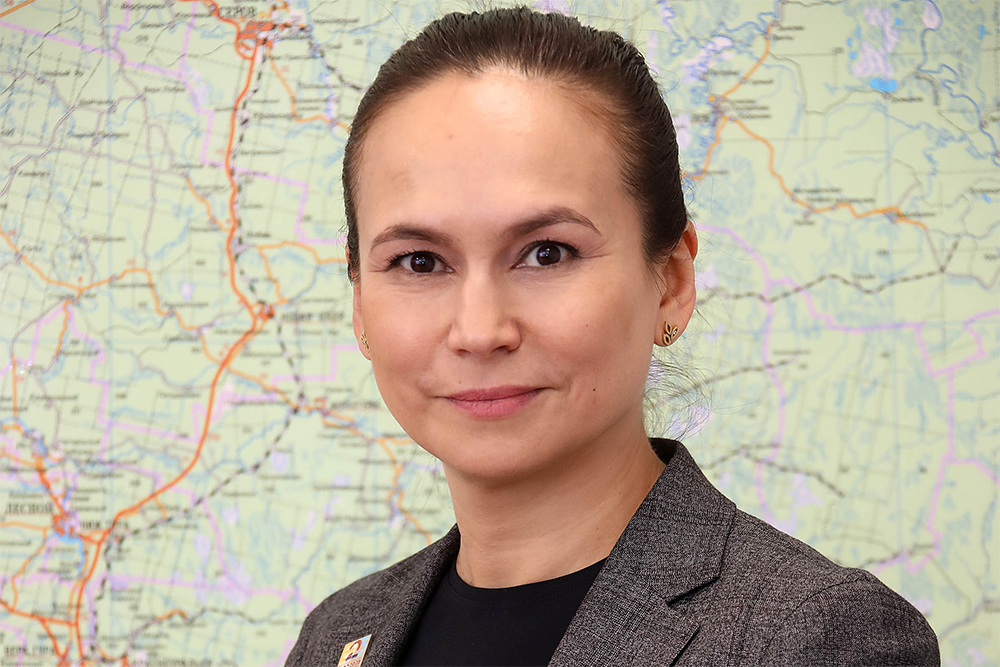 |
|
|
|
Monotowns to receive 157-billion support
24.12.2018 — Analysis
Several breakthrough projects in various fields (industry, construction, agriculture, education, science, culture) were kicked off in the Sverdlovsk Region in 2018, enabling local governments master new competences and demonstrate social and economic growth. With that, there are some towns prosperity of which is closely tied to the only local enterprise. Thus, they require special attention to be paid by the authorities, as they concentrate almost one third of the region population.
Viktoria Kazakova, Minister of Investment and Development of the Sverdlovsk Region, told RusBusinessNews how regional government enhances social infrastructure, encourages activities of small enterprises, and raises external investments for monotowns.
– There are more than a dozen mono-profile localities in the Sverdlovsk Region. What social programs exist to support and develop them? – 17 monotowns, to be specific. It is among the highest mono-profile town numbers in Russia, outstripped by the Kemerovo Region only. They occupy a significant niche in the economics and industry, therefore being of priority value for the regional government, as it was stated by the Governor Evgeny Kuyvashev in the Five-Year Development Plan. No doubts that every town has its own potential; our mission is to define it and encourage unleashing by cooperating closely with local authorities and backbone enterprises. We can see the social and urban environment upgrade due to such interaction, investors engaged and entrepreneurship supported, workplaces created.
We can notice the first accomplishments even at this stage. Particularly, 45,000 occupations not related to township-forming companies, appeared in the monotowns — more than twofold more than normal for our region. Since 2016, 157 billion rubles have been raised to finance the monotowns. This money is already manifesting its effect: entrepreneurial activity evolves, new jobs appear, and more funds are transferred to public budgets to facilitate social environment.
— How did these measures affect life of citizens?
— Improvements are quite prominent in all social aspects of mono-profile localities. For instance, central streets of all the monotowns were overhauled in 2017, following the Ministry of Energy and Housing’s program. Online voting enabled citizens to choose which streets had to be repaired. Besides, local-character highways were fully repaired in 2018, supported by regional budgets of Verkhnyaya Pyshma, Kamensk-Uralsky, Krasnouralsk, Nizhny Tagil, Pervouralsk, Revda, and Serov.
Throughout this year, redevelopment of yards and parks was intensified, as funding had been enhanced almost twofold and reached 600 million rubles. This allowed for improving around 110 urban places in the monotowns. For example, the major stage of Komsomolsky Park redevelopment was finished in Volchansk — the town entered the “improvement top rating” of the Sverdlovsk Region. Meanwhile, embankment redevelopment in the town of Verkhnyaya Tura became Russia’s best project among small cities and won the 30-million grant.
Leisure is another field subject to current evolvement; residents and visitors of the monotowns must be more empowered for cultural refreshment. Open-air museum of mountain machinery was opened in Krasnoturyinsk, bringing visitors to the history of mining and demonstrating early equipment. Also in this town, Chipmunk Park was redeveloped with support of the regional budget. Nizhny Tagil reported on completion of the two-year work on founding the leisure complex nearby the Museum of Art, which comprises the art area and sculpture garden. All these projects were carried out within the framework of the regional Ministry of Investment and Development’s program, with total budget financing amounting to around 12 million rubles.
Public housing objects are being modernized and upgraded in the monotowns, quality of main water and heating is being improved. Through the kind offices of the regional Ministry of Energy and Housing, public-private partnership is engaged for implementation of the planned projects. In particular, public housing partnership agreements were concluded in 2018 in Kamensk-Uralsky, Serov, Nizhny Tagil, and Revda; total amount of related investments exceeded 10 billion rubles.
Last year, housing objects in Verkhnyaya Pyshma, Serov, and Karpinsk were put into service, and 5 more monotowns reported on the similar accomplishments in 2018. The water conduct was reconstructed in Volchansk, water piping and boiler facilities were constructed in Krasnoturyinsk, and waste-treatment plants were built in Krasnouralsk, Revda, and Serov.
- Did these localities report on any social-environment achievements?
- For two years, more than 30 monotown health centers were repaired according to the program of the Ministry of Public Health. Children’s health centers were renovated in Asbest, Kamensk-Uralsky, Krasnoturyinsk, Nizhny Tagil, and Revda. Advanced equipment for medical facilities was purchased for almost all monotowns, and a telemedicine point was opened in the public hospital of Volchansk, which now enables physicians to consult patients remotely and participate in “off-site” educational events. Besides, ambulance parks were renovated in monotowns: 37 new vehicles were purchased.
Construction of state-of-the-art social and educational facilities is among the highest priorities. This way, construction of schools was finished in Revda and Kamensk-Uralsky, a children’s art center and maternity clinic were built in Verkhnyaya Pyshma, an art school was founded in Serov, and a sport-and-recreation center was introduced in Pervouralsk.
Speaking of education, professional and pre-professional training was emphasized. In 2017, school leavers from 11 monotowns entered the Ural State Pedagogical University based on the target reception directive. In mid-December, children’s technology center Quantorium was opened in Pervouralsk — while playing, schoolchildren will learn basics of robotics, coding, modeling, and other high-tech sciences.
— How do authorities encourage small and medium enterprises in the monotowns?
— By means of municipal entrepreneurship support funds that operate in 15 out of 17 monotowns, we offer end-to-end support — from idea generation to launch and further development. Startuppers can visit these funds to get financial or legal consultations, bank bonds, low-amount and investment loans. For nine months of work, more than 6,700 people requested services of support funds.
Following the initiative of Evgeny Kuyvashev, the Governor of the Sverdlovsk Region, the new project of the Center for Social Innovations is being implemented. Pilot monotowns included Kamensk-Uralsky and Pervouralsk. The center trains social entrepreneurs and provides them with no-interest loans of amounting up to 500 thousand rubles. Next year, the project is to reach Nizhny Tagil, Asbest, and Krasnoturyinsk.
— Areas of priority social and economic growth are developing in Russia. How is it going in the Sverdlovsk Region?
— To date, there is one area of this kind in the region, which covers the city of Krasnoturyinsk. In this monotown, three residents — processing plants of various nature — are actively implementing dedicated projects. For instance, Bogoslovsky cable plant launched the second production facility and thus enabled the full production cycle and offered 100 new jobs.
The application of the fourth resident (Krasnoturyinsk-Polymetal) was approved in mid-November 2018. The project implies raising around 3 billion rubles and offering around 150 new jobs.
By the end of 2018, we are planning to submit a request of creating another rapid-development area in the city of Verkhnyaya Tura. Requiring 7 billion rubles to be invested, this area will be specialized on manufacturing and forestry, with the prospect to provide 400 workplaces.
– What are the benefits of these areas for the town and the investor?
– For a monotown, the status of the priority-development area may give the new surge for gaining pace of social and economic growth. Investors are more likely to deploy production facilities within such areas, as they receive tax exemptions this way. Investments raised encourage diversification of the monotown economy, aligning the tax burden and budget capabilities, and offering new jobs. All that leads to improvement of the social environment: hospitals and schools get repaired, new pre-schools appear, roads become fully refurbished, educational and leisure infrastructures evolve.
As a result, attraction of investors, support of small businesses, and implementation of regional programs facilitate solution of our priority task — enhancing the quality of life in monotowns. And we will keep working on it.
|
| Regions | Project participants | Investment projects | Consulates and Trade Offices | News and Analysis | About the Project |
|
© RusBusinessNews, 2009. All rights reserved. Establishing a hyperlink to RIA RusBusinessNews is required for using any of the material published on this website. News and analytical reviews are translated into foreign languages by the TRANSLIT Translation Agency |
«Sum of technologies»® Web design Site promotion |
